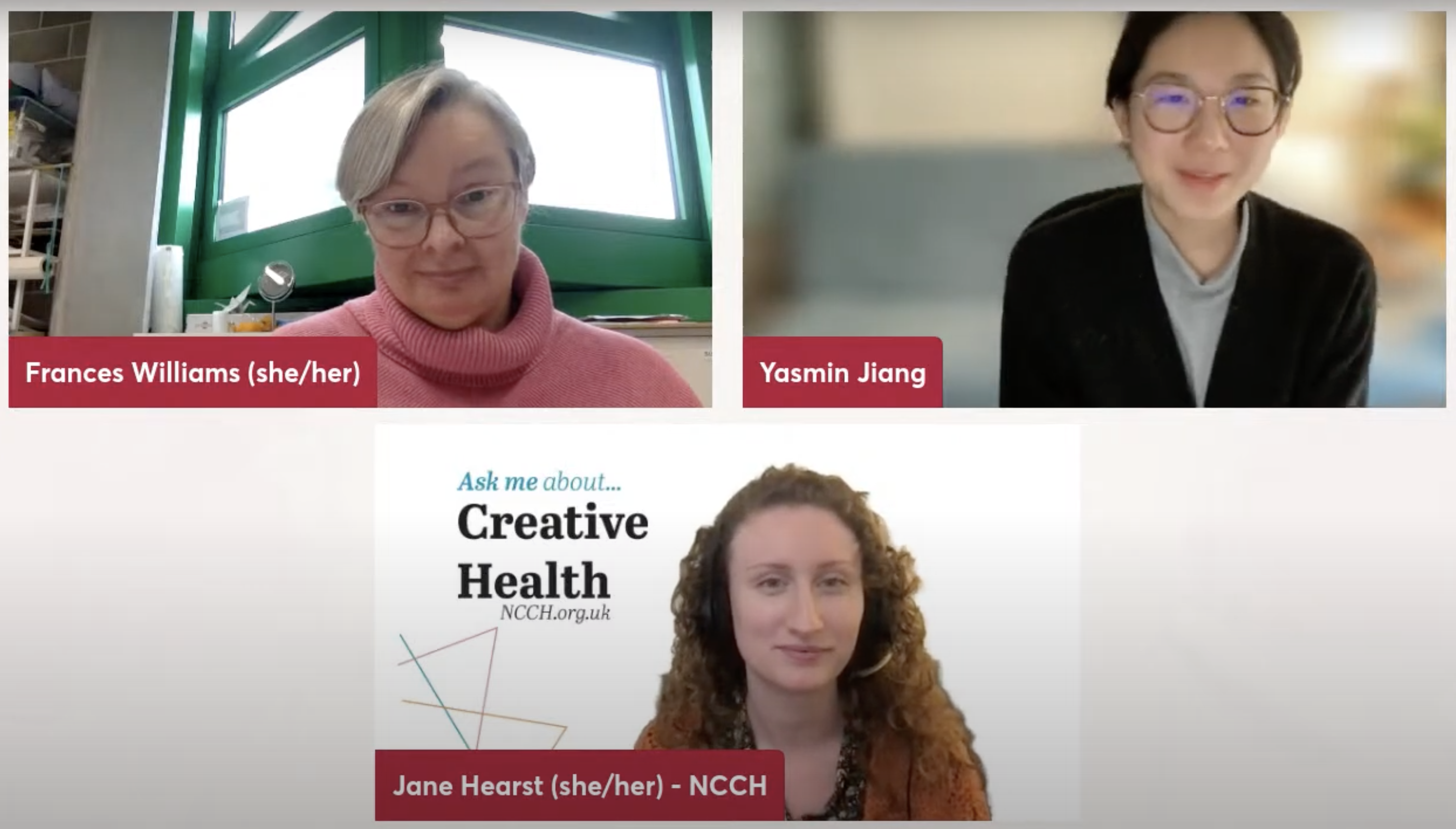Queering Creative Health
On 21st February, Midlands Creative Health Associate, Jane Hearst (she/her), was joined by LGBTQIA+ researcher, Yasmin Jiang (she/they) and Frances Williams (she/her), Health & Research Lead at Queer Circle, to discuss the act of Queering Creative Health. The event was part of an LGBT+ History Month line-up by DMU Pride, Leicester. The 2024 National History Month theme was Medicine – celebrating ‘LGBT+ peoples’ contribution to the field of Medicine and Healthcare both historically and today’.
At the event, Frances discussed the history of the LGBT+ community’s relationship with healthcare – a history which was difficult and involved the pathologisation of queer identities. She shared historical examples of activism, including the Gay Liberation Front Manifesto which called against all forms of oppression and victimisation. She also shared examples of famous Creative Health projects from LGBT+ history, the most notable being the NAMES Project AIDS Memorial Quilt. Frances invited us to consider Creative Health as one social movement that was linked to many other social movements, all of which reject failing systems. This focused our attention towards the liberatory aspect of Creative Health work.
Yasmin then presented about their work in the Queer(ing) Creative Health project. Here, LGBT+ individuals explored what health and wellbeing meant to them. The outcomes were that health and wellbeing extended beyond the individual and involved legibility within institutions. Participants identified vulnerability and safety as a core aspect of their ability to ‘care for’, whilst structural injustices affected their ability to ‘care about’. Moreover, they identified that, for them, health and wellbeing was non-linear and in flux – challenging ideas of normativity and acknowledging transitionary stages. Part of the Zine that resulted from this project, was an image comparing the traditional idea of curing health and wellbeing, to a queered view of adaptation. This image was intended as a provocation, rather than a complete rejection of the biomedical model of health.
Throughout the discussion, Queer Circle identified their role as one of holding space for collective empowerment. In the discussions that followed the presentations, Jane was curious to know how we find a balance between communicating the benefits of Creative Health to systems without becoming complicit in the over-medicalisation of human experience. She also questioned about topics such as modern LGBT+ experiences of healthcare – both within and outside of medical systems – and the facilitation of evenly-powered LGBT+ discussion groups.
To watch the event discussions in full, visit:
Resources recommended by Queer Circle:
Queer Creative Health Zine, by Meg-John Barker, for Queer Circle
Queering Creative Health Report, by Queer Circle
The Arts in Healthcare: Learning from experience, by Duncan Haldane & Sarah Loppert
A Model and Theory of Community-Based Arts and Health Practice, a PhD thesis by Eleanor Anni Raw
What’s on, at Queer Circle, London
Why queer creative health? Guest blog by Frances Williams, for Culture Health and Well-being Alliance
Resources recommended by the NCCH team:
The Place of Creative Health in LGBTQIA+ Personalised Care, an NCCH blog by Creative Health Associate, Jane Hearst
Handing on Our History project, 2019, set up by NCCH Creative Health Associate, Alice Thwaite
The Creative Health Review, by APPG on Arts Health and Wellbeing, in collaboration with NCCH
Re-imagining Pride: Mothers of Invention, by Julie Ballands
Arts Development in Community Health: A Social Tonic, by Mike White
